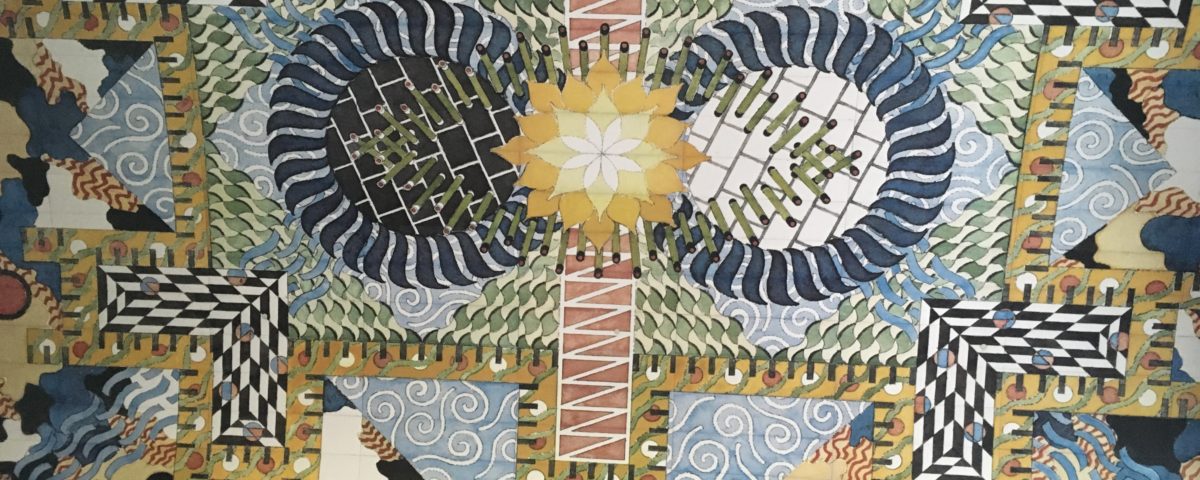On the Road with Betsy Woolf – Rice University

The most difficult thing for me to decide to do in writing up my return experience at Rice University was deciding which photo to use. Rice is undeniably one of the most beautiful campuses in the United States, but it’s not just that Italian classical architectural style and the arches and trees (supposedly more than the number of students) that distinguish the campus. It’s the scholarship that happens here, and the sense of creativity, most spectacularly exemplified by the photo I chose. It is the ceiling of Duncan Hall, an engineering building.
Beyond that ceiling, Rice is a university that encourages exploration while allowing students flexibility in choosing classes. All students must take three classes in each of three areas: humanities, social sciences, and natural sciences. But they are free to chose any three in any of these areas. So, as my tour guide said, if you are studying an area that does not require math, then you don’t have to take math! (He was a political science major. No idea if he studied math…) Aside from the renowned Shepherd School of Music and the School of Architecture, students have flexibility in deciding on their areas of study. Although students are asked to indicate their areas of academic interest in their applications, they enter Rice as undecided students, free to find their paths while on campus.
Students say that the atmosphere is not competitive. Rice has long been known for STEM and engineering, and the Texas Medical Center is right next door. This conglomerate of health-related institutes is larger than the city of Dallas. Rice’s academic programs run the gamut, including vocal performance, kinesiology, linguistics, political science, sport management and the study of women, gender and sexuality. In fact, it is the home of the Baker Institute for Public Policy, a think tank and center for public policy research, and the Doerr Institute for New Leaders.
Rice is not a big place. There are only 3900 students, and they live in 11 residential colleges. Students are assigned at random, so each college is diverse, as is Rice as a whole. There isn’t a Greek system. Social life revolves around the residential colleges. Each college has its own dining hall, called a servery, and each has a faculty member who lives in an adjacent house and supports students. The residential colleges are self-governing with students in charge of each house’s $40,000 annual budget. Each has its own traditions, such as Christmas in September at Baker College, one of the first residential colleges at Rice and the one that houses the Commons or Great Hall that will remind students of Harry Potter.
When you visit Rice, see how many Rice “owls” you can spot. And to see the rest of my Rice images, please visit my Facebook page: https://www.facebook.com/Woolf-College-Consulting-206697726013340/

